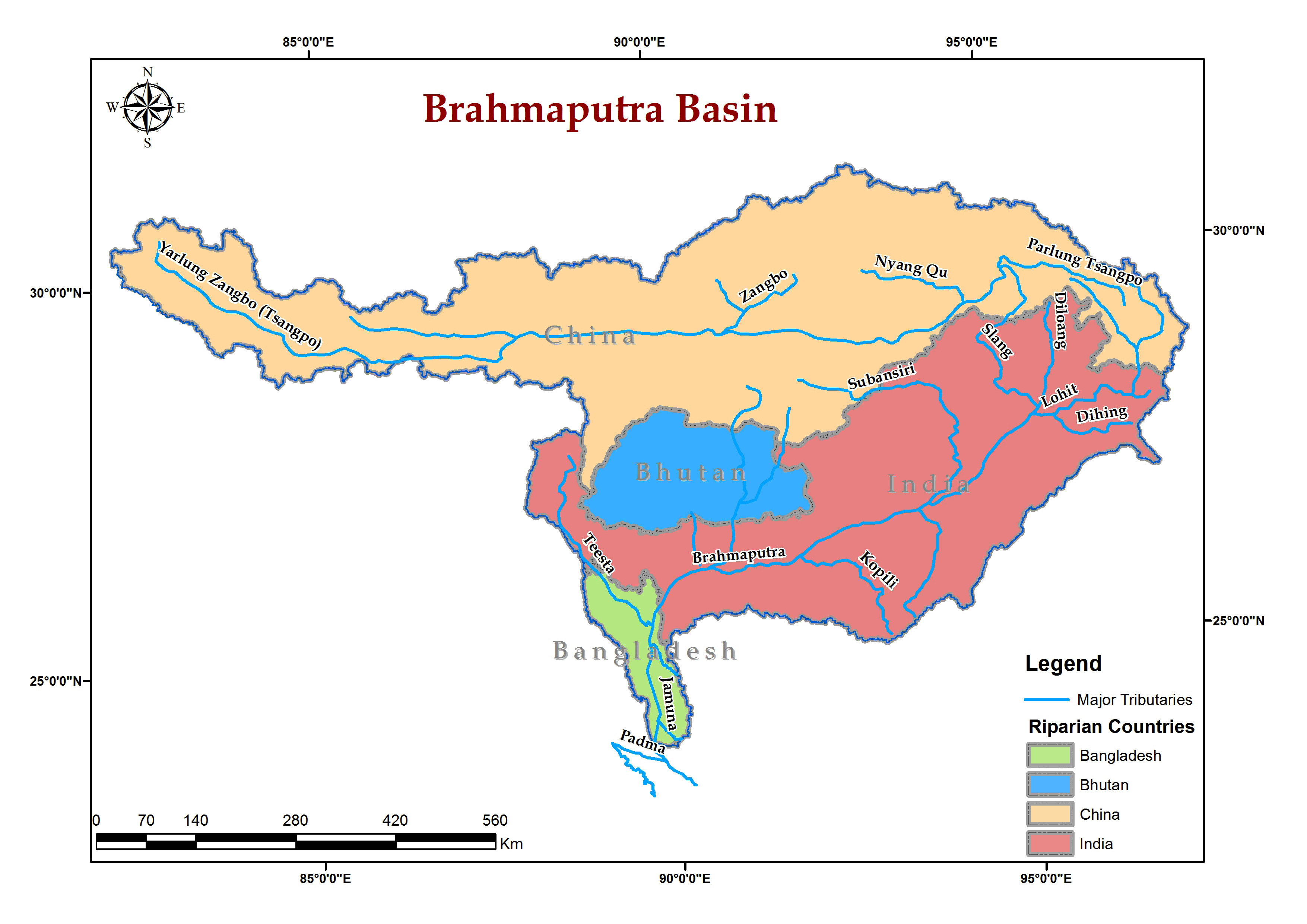 The Brahmaputra River Basin, the mainstream of which originates from the Tibetan Plateau, is the biggest trans-Himalayan river basin, encompassing parts of the territory, ecosystems, people, economies and politics of China, Bhutan, Nepal, India and Bangladesh. The basin covers an area of 651,335 km2 and is home to about 118 million people with a density of 182 people/km2.
The Brahmaputra River Basin, the mainstream of which originates from the Tibetan Plateau, is the biggest trans-Himalayan river basin, encompassing parts of the territory, ecosystems, people, economies and politics of China, Bhutan, Nepal, India and Bangladesh. The basin covers an area of 651,335 km2 and is home to about 118 million people with a density of 182 people/km2.
The region has many significant and often related social challenges which include floods and water scarcity; population growth and poor infrastructure; food insecurity and poverty; social uprising and insurgency; labour migration; ethnic minority disenchantment; unsustainable traditional land use practices; HIV-AIDS and other public health problems; border disputes and resource conflicts.
The basin is inhabited by many indigenous peoples, who have traditionally engaged in nomadic and agro-pastoralist practices in the upstream regions of Tibet, China, shifting cultivation in the upper-middle in northeast India, terraced agriculture in the middle mountains of Nepal and Bhutan, and intensive rice paddy and fish cultivation in the downstream reaches in Bangladesh. The total water supply in the basin varies from 1,700 to 4,000 m3/yearper person, indicating adequate water availability throughout the basin. However, the basin is characterized by large seasonal fluctuation in water availability due to the very wet monsoon and the extremely dry winter.
The issue of hydropower has also acquired great significant in the area. For example, about half of Bhutan’s national revenue depends on hydropower that is generated from waters contributing to the flows of the basin. In total 11 large dams larger than 60m or with an installed capacity of more than 100MW, are currently under construction or are planned. The Brahmaputra mainstream is also navigable in the lower parts in Bangladesh and India (mainly Assam) and in that way also serves as an economic corridor.
Key challenges for sustainable management of the basin include conflicts over water, which are increasing both within and between countries. Conflict is looming large over sustained growth in water and energy demand, interference with natural river flows from dams, inter-basin water transfers, water diversions, deforestation and floods, altered sediment and nutrient loads. Livelihoods are already impacted by changes to hydrology from erosion and to the ecology from deforestation and plantation. Food production systems, cultural identity, rural economies have all seen dramatic changes in recent years, with more changes likely in the time to come. Among the most powerful contemporary forces shaping both local cultures, livelihoods, land-use and ecosystem are various government policies and the expansion of regional, national and international markets. A dialogue between the different stakeholders from neighboring countries is critical for the smooth functioning of the basin.
About the Project
Transnational Policy Dialogue for Improved Water Governance of Brahmaputra River
Aims and Objectives
The phase III (2015 - 2017) will bring together the four riparian countries of Brahmaputra Basin – Bangladesh, Bhutan, China and India – for dialogue on co management of the river basin. This phase of the Brahmaputra Dialogue aims to develop a basin level institutional framework for strengthening the comanagement of the Brahmaputra Basin. The following objectives will aid in achieving this aim.
- To review the existing transboundary protocols/ treaties/accords to understand the processes shaping the institutional arrangements for managing the transboundary rivers.
- To bring the views of multi-stakeholders (government, civil society organizations, funding agencies, academia, scientific community, media) through individual interactions and multiple workshops
- To assess the various economic opportunities, challenges and research priorities in the basin
- To map the functionalities attached to various government (central/state) line departments to bring dovetailing and improved coordination for basin management
